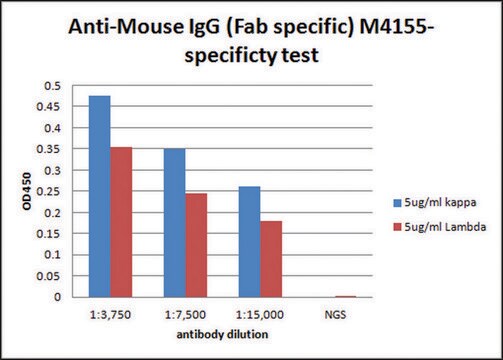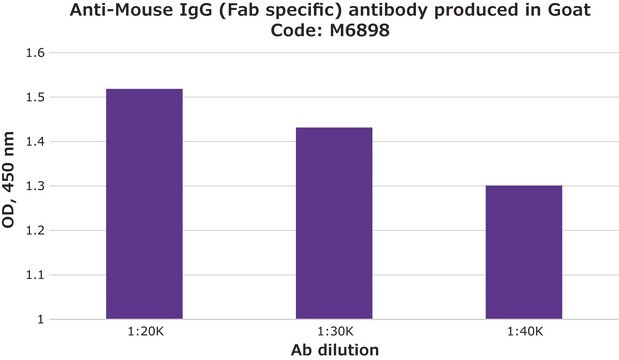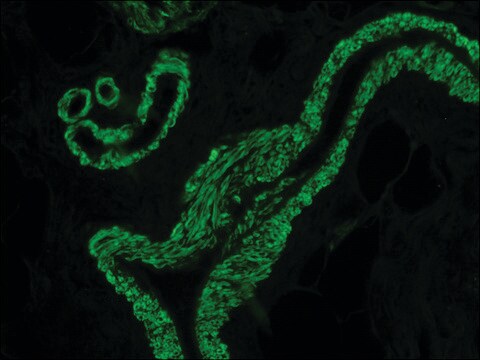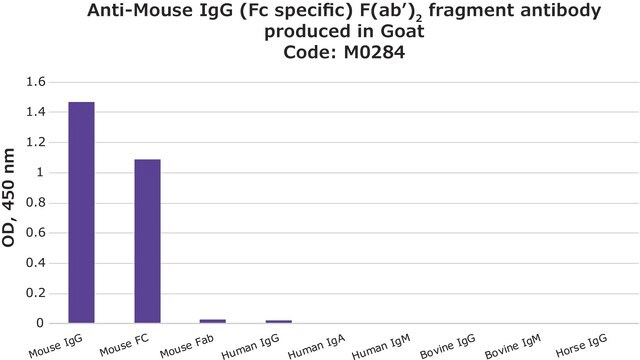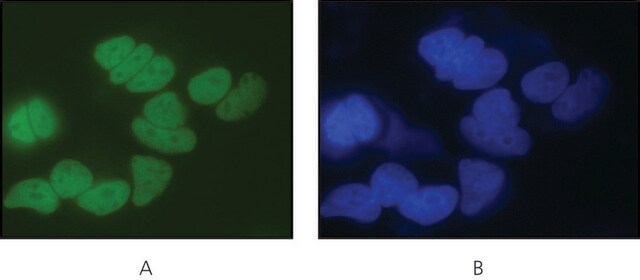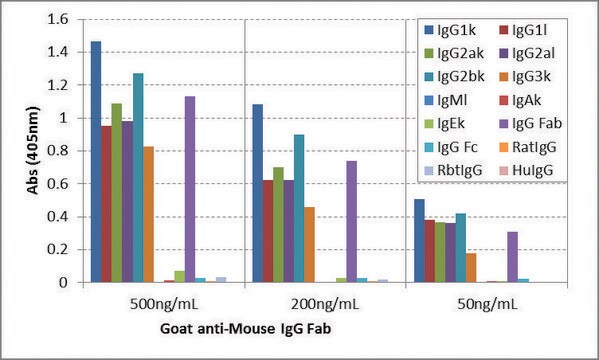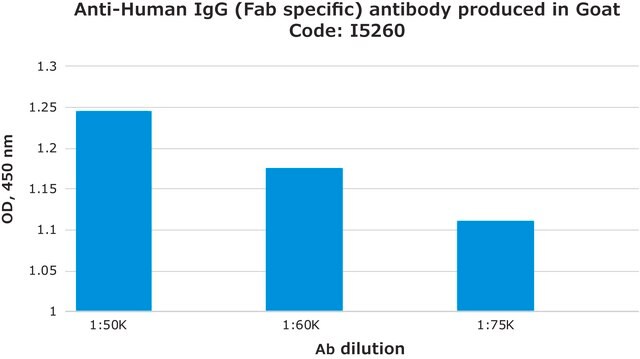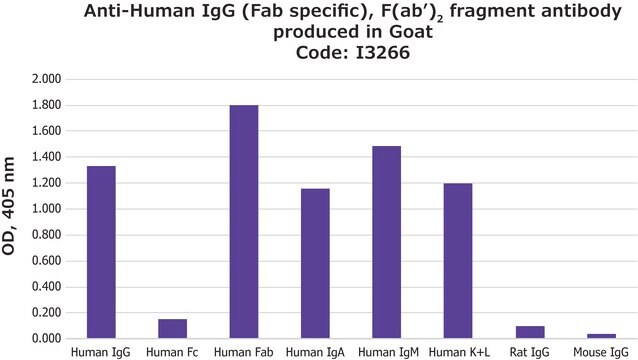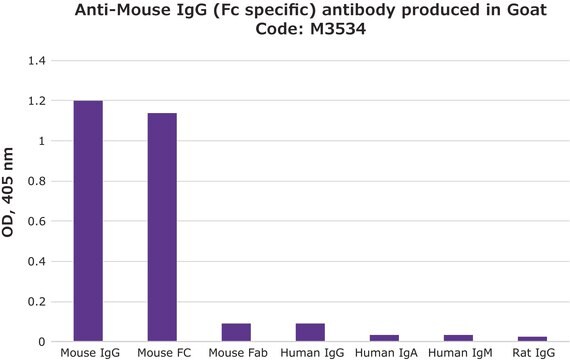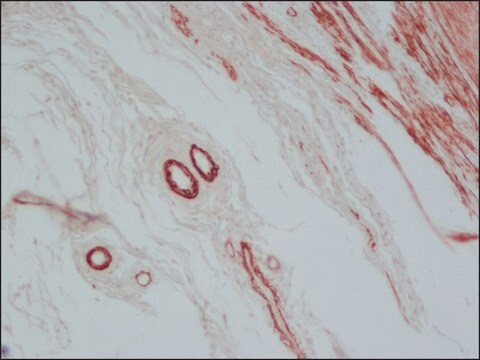M0659
Anti-Mouse IgG (Fab specific) F(ab′)2 fragment antibody produced in goat
affinity isolated antibody
Synonym(s):
Anti-Mouse Fab Fragment, Fab Specific Detection, Goat Anti-Mouse IgG Fab
About This Item
Recommended Products
biological source
goat
conjugate
unconjugated
antibody form
affinity isolated antibody
antibody product type
secondary antibodies
clone
polyclonal
concentration
2.0 mg/mL
technique(s)
indirect ELISA: suitable
shipped in
dry ice
storage temp.
−20°C
target post-translational modification
unmodified
General description
Anti-Mouse IgG (Fab specific) F(ab′)2 fragment antibody is monospecific as determined by immunoelectrophoresis versus normal mouse serum, mouse IgG and the Fab fragment of mouse IgG. The antibody does not react with the Fc fragment of mouse IgG. Moreover, no reactivity is observed with human κ or lambda light chain, IgG, IgA, IgM, IgD and IgE, bovine IgG and IgM, or horse IgG as determined by ELISA. In immunoelectrophoresis, the antibody preparation is found to consist only of the F(ab′)2 fragment of goat IgG, where specific antisera is applied to goat IgG fragments. No contamination with goat IgG whole molecule is observed.
Immunogen
Application
Other Notes
Physical form
Disclaimer
Not finding the right product?
Try our Product Selector Tool.
Storage Class Code
12 - Non Combustible Liquids
WGK
nwg
Flash Point(F)
Not applicable
Flash Point(C)
Not applicable
Certificates of Analysis (COA)
Search for Certificates of Analysis (COA) by entering the products Lot/Batch Number. Lot and Batch Numbers can be found on a product’s label following the words ‘Lot’ or ‘Batch’.
Already Own This Product?
Find documentation for the products that you have recently purchased in the Document Library.
Customers Also Viewed
Our team of scientists has experience in all areas of research including Life Science, Material Science, Chemical Synthesis, Chromatography, Analytical and many others.
Contact Technical Service